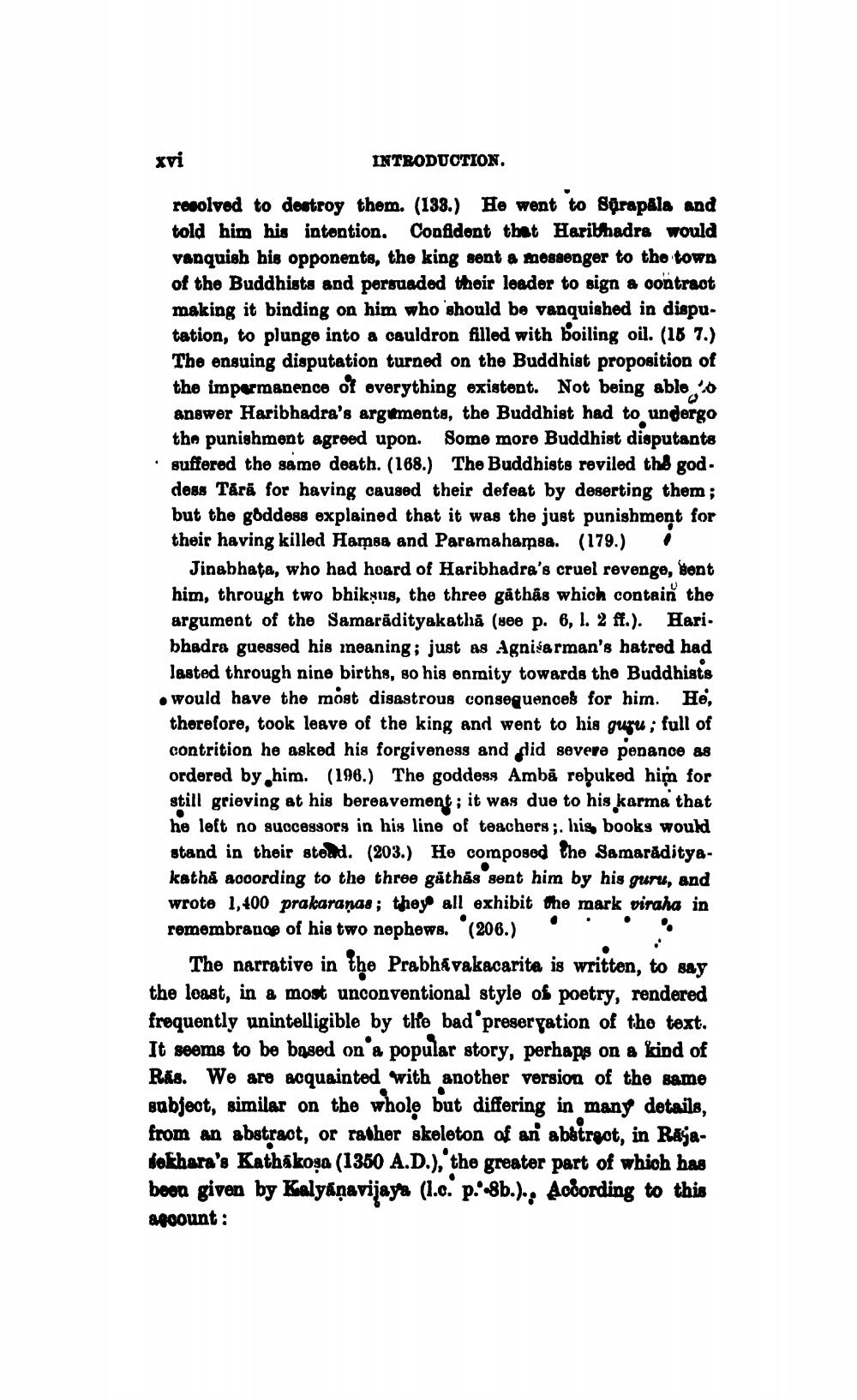________________
xvi
INTRODUCTION.
resolved to destroy them. (138.) He went to Särapåla and told him his intention, Confident that Haribhadra would Vanquish his opponents, the king sent a mossenger to the town of the Buddhists and persuaded their leader to sign a contract making it binding on him who should be vanquished in disputation, to plunge into a cauldron filled with boiling oil. (16 7.) The ensuing disputation turned on the Buddhist proposition of the impermanence of everything existent. Not being able answer Haribhadra's argements, the Buddhist had to undergo the punishment agreed upon. Some more Buddhist disputants • suffered the same death. (188.) The Buddhists reviled the god.
desa Tárā for having caused their defeat by deserting them; but the goddess explained that it was the just punishment for their having killed Hamsa and Paramahamsa. (179.)
Jinabhata, who had hoard of Haribhadra's cruel revenge, font him, through two bhikṣug, the three gåthås which contain the argument of the Samarādityakathā (see p. 6, 1. 2 ff.). Hari. bhadra guessed his meaning; just as Agnisarman's hatred had lasted through nine births, so his enmity towards the Buddhists • would have the most disastrous consequences for him. He, therefore, took leave of the king and went to his guru; full of contrition he asked his forgiveness and did severe penance as ordered by him. (196.) The goddess Ambă rebuked him for still grieving at his bereavement; it was due to his karma that he left no successors in his line of teachers;, his, books would stand in their sted. (203.) He composed the Samaradityakathă according to the three gathās sent him by his guru, and wrote 1,400 prakaranas; they all exhibit the mark viraha in remembrance of his two nephews. (206.) . . .
The narrative in the Prabhávakacarita is written, to say the least, in a most unconventional style of poetry, rendered frequently unintelligible by the bad preservation of the text. It seems to be based on a popular story, perhaps on a kind of Ris. We are acquainted with another version of the same subject, similar on the whole but differing in many details, from an abstract, or rather skeleton of an abstrgot, in Rajasokhara's Kathakoşa (1350 A.D.), the greater part of which has been given by Kalyanavijaya (1.c. po-8b.). According to this account:




